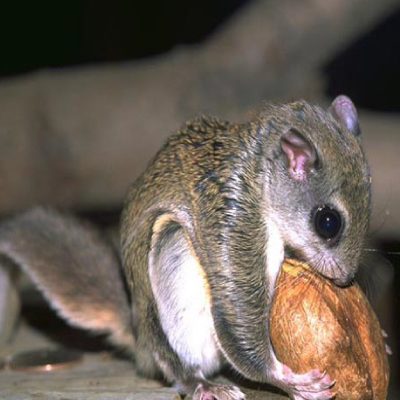
 We have all heard dire predictions that global warming will cause species extinction. Such predictions are based on ecological niche models (ENMs) that study where animals live now and assume that they must have the same habitat conditions to survive.
We have all heard dire predictions that global warming will cause species extinction. Such predictions are based on ecological niche models (ENMs) that study where animals live now and assume that they must have the same habitat conditions to survive.
A new study from the University of Oregon, based on fossil evidence shows that these studies fail. The researchers studied the fossil records of five ancient mammalian species that survived North America’s last glacial period. All the models said they should have lived much farther south than the fossil evidence shows.
The paper abstract reads:
Ecological niche models (ENMs) are crucial tools for anticipating range shifts driven by climate change. As hypotheses of future biotic change, they can be difficult to test using independent data. The fossil record is the best way to assess the ability of ENMs to correctly predict range shifts because it provides empirical ranges under novel climate conditions. We tested the performance of ENMs using fossil distributions from the Last Glacial Maximum (LGM, ~21 000 yr ago). We compared hindcast ENM LGM distribution hypotheses for five species of small mammals, drawn from the published literature, to the known LGM fossil record for those species and found a consistent southern prediction bias in the ENMs. This bias urges caution in interpreting future range predictions, and we suggest that the Pleistocene and Holocene fossil record should be used as an additional resource for calibrating niche modeling for conservation planning.
One of the researchers commented in a press release about the short-tailed shrew, one of the species studied:
“It’s almost as though it is living in all of the places that the model says it shouldn’t be living in and not in any of the places that the model says it should be living in,” said Davis, who also is manager of the paleontological collection at the UO Museum of Natural and Cultural History. “This suggests to me that whatever the model is keying on is not actually important to the shrew.”
Nor to the American marten, two species of flying squirrels and the Gapper’s red-backed vole, all of which lived mostly outside of predicted ranges, according to the fossil record. Northern and southern flying squirrels, the Davis study found, shared a compressed geographic region. It may be, Davis said, that some species tolerate competition under harsh conditions but separate when abundant resources are available.
See Press Release and Full Paper.
As with climate models, we see here, too, that modeling in other areas of science often diverges from actual observation. This occurs either because the modeled systems are too complex or the modelers work with erroneous assumptions. Remember that the next time you see headlines which proclaim extinction of species X due to global warming.
See also:
UN IPCC Synthesis Report is a pack of lies
National Climate Assessment lacks facts, an analysis
Holes in the Ozone Hole Hypothesis
Megadroughts and the Arizona Daily Star
Study shows that greenhouse gas induced warming decreased in last 14 years
Evidence that CO2 emissions do not intensify the greenhouse effect
